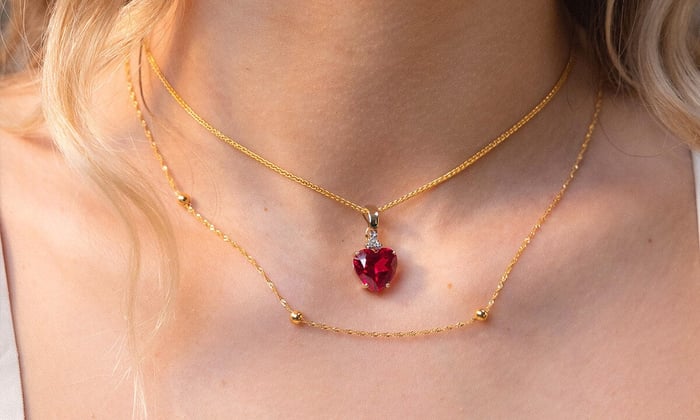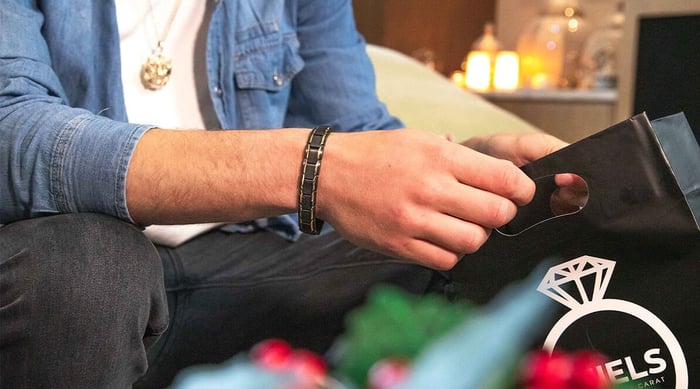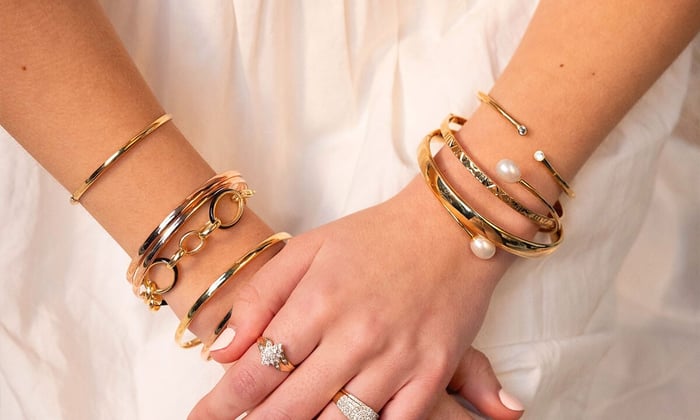Aside from the fact that one is a lot cheaper, not many people know the difference between cubic zirconia and diamonds.
Many people may consider cubic zirconia jewellery as nothing more than a cheap diamond replica. But we beg to differ. Yes, Cubic Zirconia is made of synthetic materials, but that’s not a bad thing? It simply translates to something that has a chemical makeup; a substance that has been created by humans in a controlled environment.
To the naked eye, it’s almost impossible to tell the difference between cubic zirconia and diamond jewellery. In fact, training is often required for an individual to spot the difference between the two stones. Many jewellery specialists will need to look very, very closely, using a microscope with 10X magnification before confirming which is which.
So, what is the difference between cubic zirconia and diamonds? Read on to find out.
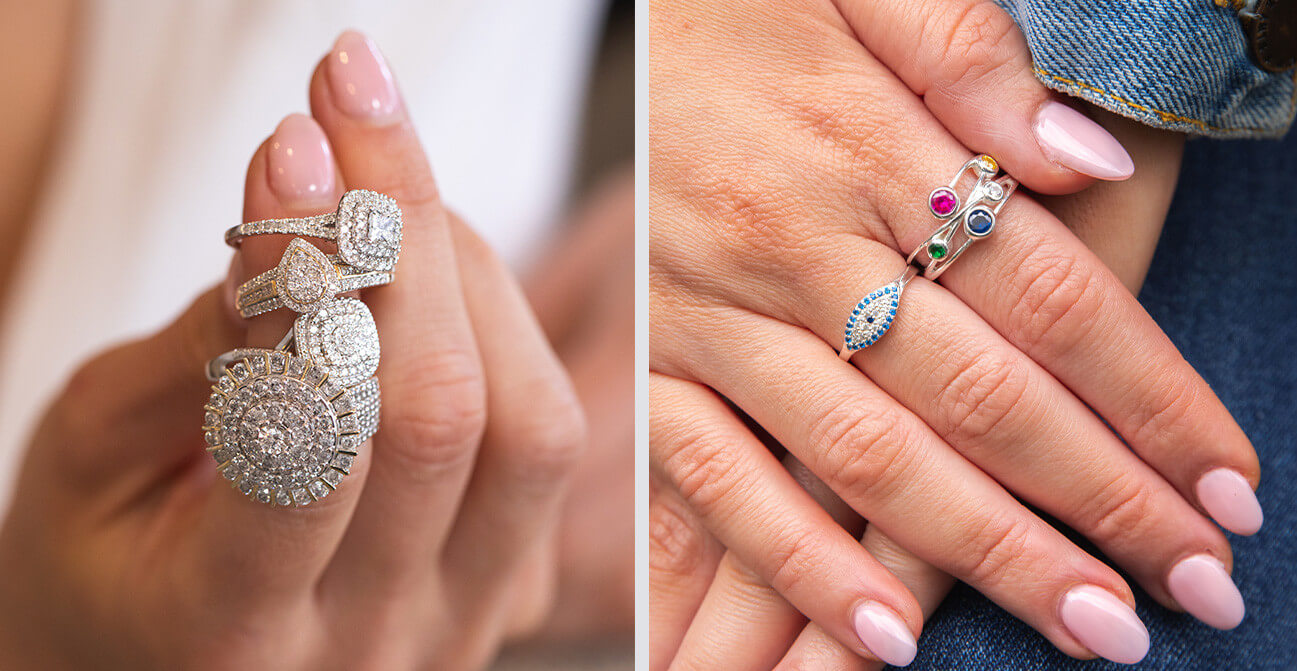
The Differences Between Cubic Zirconia & Diamonds
- Diamonds vs Cubic Zirconia
- Hardness
- Dispersion
- Refractive Index
- Cost
- Are Lab-Grown Diamonds The Same As Synthetic Diamonds?
- Are Moissanite & Cubic Zirconia The Same?
Diamonds vs Cubic Zirconia
One of the main differences between diamonds and cubic zirconia lies in their composition and origin. Diamonds are composed of carbon, a tough mineral that has a unique ability to form diverse compounds due to the element's unique bonding properties. Found in a variety of natural forms, carbon becomes diamonds below the earth's surface (or in a laboratory in the case of lab-grown diamonds) when extreme pressure and heat cause the carbon to crystalise.
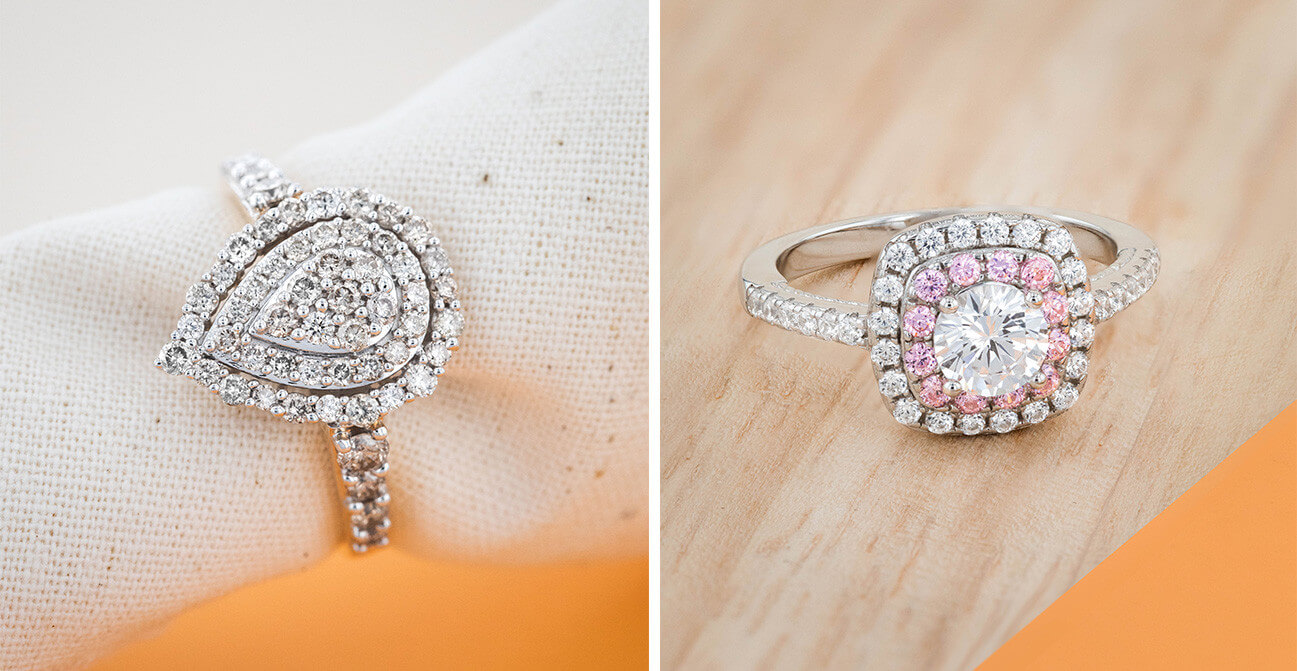
On the contrary, cubic zirconia stones are completely man-made and are produced using a substance known as zirconium dioxide, a compound completely different to carbon. While cubic zirconia can mimic the appearance of diamonds, it lacks their natural hardness and unique optical properties such as the stone's hardness, dispersion abilities, refractive index and of course, cost.
9CT YELLOW GOLD CUBIC ZIRCONIA GRADUATED 7 STONE RING

$334.00
$934.00
Please contact us regarding special order enquiries for this ring. All ring sizes can be specially ordered, with delivery approximately 10-12 weeks.… read more
18CT YELLOW GOLD RING WITH 1 CARAT OF BEZEL SET DIAMONDS

$2,234.00
Designed in an undeniably beautiful style, this 18ct Yellow Gold Ring With 1 Carat Of Bezel Set Diamonds is outstanding with 5 diamonds in the centre of the band. The brilliance of these diamonds is truly mesmerising, capturing and reflecting… read more
Hardness
It is well-known that diamonds are the hardest naturally formed material in the world. They are so tough that the only thing that can pretty much damage these stones is another diamond. Rating a perfect 10 on the 'Mohs Scale of Hardness', a chart used in mineralogy to score a mineral's strength and durability. This makes diamonds practically unbreakable and very resistant to scratching or scuff marks. A cubic zirconia stone on the other hand, while still relatively durable falls between 8-8.50 on the scale. This means that cubic zirconia could withstand a significant fall is more easily scratched and can see some wear over time.

Dispersion
A stone's dispersion rate refers to the level of ‘fire’ or in layman's terms the number of rainbows that the stone exhibits. A gemstone's dispersion is something that is determined by how a stone breaks down light, sparkles and emits its signature brilliance. Diamonds are lauded for their sparkle and brilliance, boasting a dispersion rating of 0.044, however cubic zirconia being man-made and not at all naturally occurring scores even higher on that scale at 0.066. This means Cubic Zirconia has a pronounced ‘rainbow effect’ when catching the light, emitting a beautiful prismatic fire.
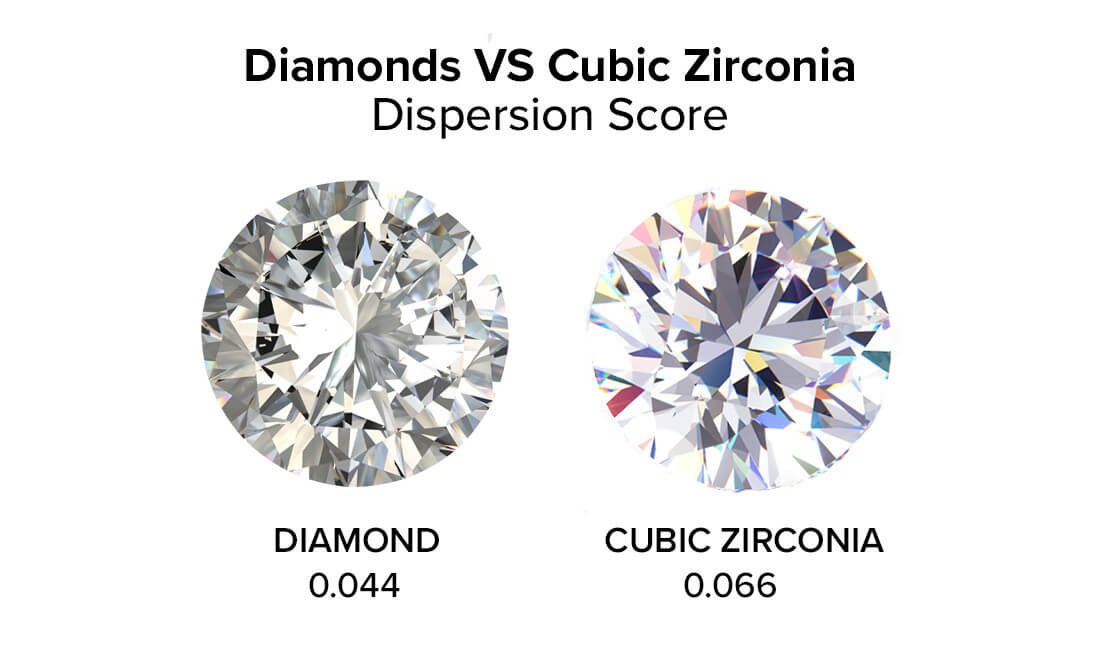
Refractive Index
Refraction, in the context of diamonds and gemstones, refers to the phenomenon where light changes direction as it passes from one medium (such as air) into another medium (such as a diamond). Everyone knows that a diamond's sparkle is its biggest selling point and the way in which light enters these stones is significantly different to that of cubic zirconia and other gemstones. As the light bends and reflects, it creates brilliance in the stone, something that is measured by a refractive index. As previously touched on, Diamonds are known for their high brilliance, with an RI of 2.42. Cubic Zirconia on the other hand has an RI of 2.15-2.18. However, the true differences in these values are hardly perceptible and difficult to spot by sight alone.
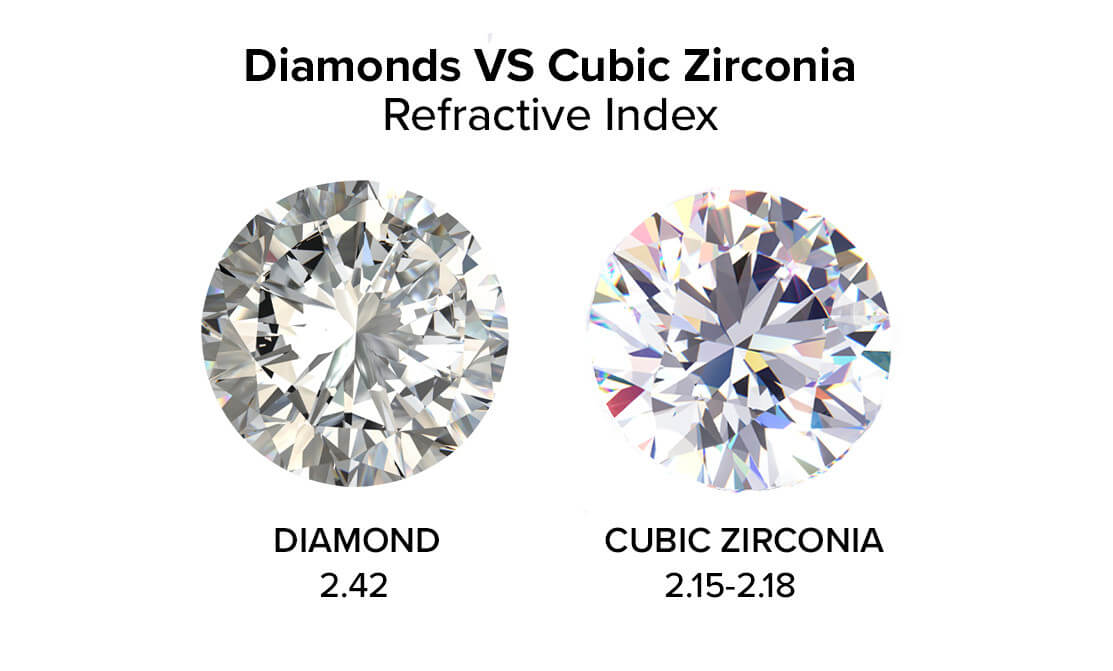
Cost
One of the biggest differences between diamonds and cubic zirconia is their price. Being a simulant diamond, Cubic Zirconia is much more affordable than a mined diamond. This is because diamonds are much rarer than cubic zirconia a require much more manpower to produce and source. But that's not to say that cubic zirconia stones are still a worthwhile purchase, in fact, there is an increasing amount of couples choosing cubic zirconia rings over diamond engagement rings when becoming engaged so that they can still achieve a beautiful sparkle without breaking the bank.

Are Lab-Grown Diamonds The Same As Synthetic Diamonds?
For those looking for a more affordable alternative to mined diamonds, lab-grown diamonds are becoming increasingly popular. However, this has led to the common misconception that lab-grown diamonds fall under the category of a diamond simulant like Moissanite and cubic zirconia. While Moissanite and cubic zirconia share no similarities with diamonds other than their similar appearance, lab-grown diamonds have the exact same physical and chemical properties as mined diamonds. This means lab-grown diamonds ARE diamonds with the only difference between them and their mined counterparts being the way in which they are formed.
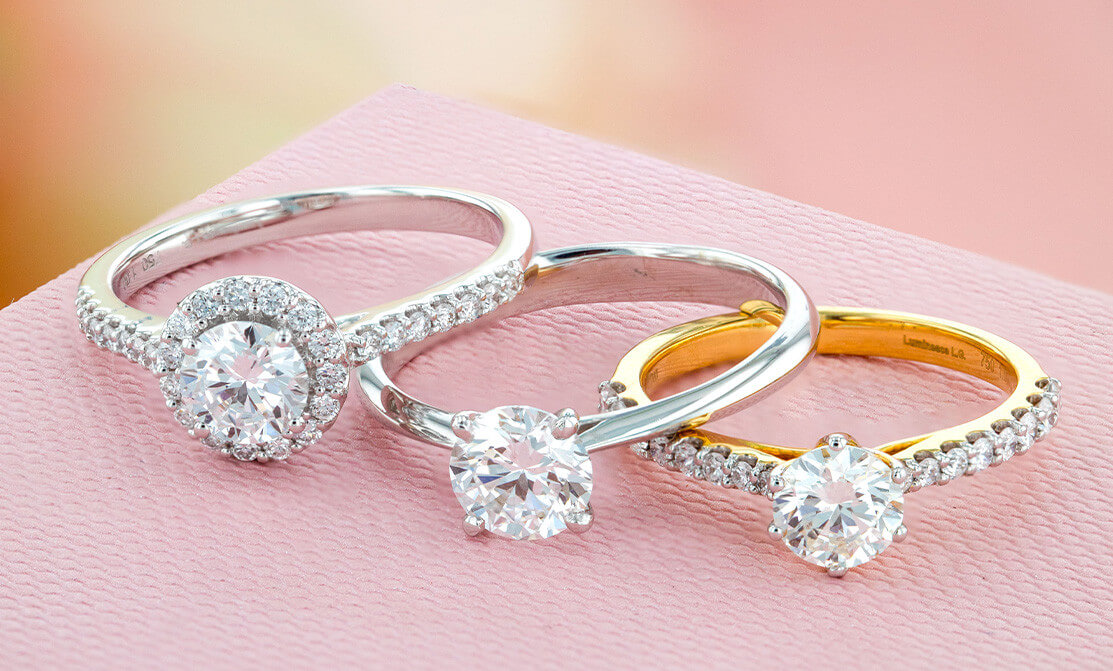
Are Moissanite & Cubic Zirconia The Same?
Another gemstone generating a lot of hype lately is Moissainte. Regarded as a more affordable alternative to mined diamonds, unlike lab-grown diamonds, Moissanite is not a diamond and is more closely associated with cubic zirconia. However, that's not to say they are the same. Unlike cubic zirconia which is composed of zirconium dioxide, Moissanite is composed of silicon carbide which is a mix of silicone and carbon. What sets Moissanite apart from cubic zirconia is its durability and sparkle. Due to the presence of carbon, Moissanite is significantly stronger than cubic zirconia and sits at around 9.25 on the Mohs Scale of Hardness. Additionally, moissanite has a higher refractive index than cubic zirconia, leading to more intense light dispersion and a more significant sparkle.




